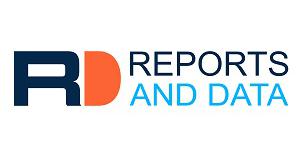
Reports And Data
Medical electronics market size was USD 7.49 Billion in 2022 and is expected to reach USD 13.77 Billion in 2032, and register a revenue CAGR of 7%
— Reports and Data
NEW YORK, NY, UNITED STATES, April 25, 2023 /EINPresswire.com/ — The global Medical Electronics Market Size witnessed a market size of USD 7.49 Billion in 2022, which is anticipated to grow and reach USD 13.77 Billion by 2032, registering a revenue CAGR of 7% during the forecast period. The market growth is primarily attributed to the increased demand for advanced healthcare services and a rise in chronic diseases. Advancements in medical device technology and increased investments in healthcare infrastructure are further driving market growth.
The market demand for medical electronics is increasing across various end-use industries such as hospitals, clinics, and home healthcare, which is propelling the revenue growth of the market. Medical electronics is expected to play a significant role in the diagnosis, monitoring, and treatment of various diseases during the forecast period. The market growth is majorly fueled by the growing prevalence of chronic diseases like diabetes, cancer, cardiovascular diseases, and respiratory diseases. The use of medical electronics equipment and technology is common in treating chronic diseases, such as pacemakers, insulin pumps, and respiratory monitoring equipment.
Furthermore, the market revenue growth of medical electronics is being accelerated by the rising demand for telemedicine and home healthcare. The demand for remote monitoring and the convenience it offers to patients is driving the growth of telemedicine and home healthcare. Additionally, government initiatives and investments in healthcare infrastructure are driving the market revenue growth. Governments around the world are investing in healthcare infrastructure to improve access to healthcare services and reduce the burden on hospitals and clinics. For instance, the Indian government’s Ayushman Bharat scheme aims to provide health insurance coverage to more than 100 million families, which is expected to increase the demand for medical electronics in India.
Get Free Sample PDF (To Understand the Complete Structure of this Report [Summary + TOC]) @ https://www.reportsanddata.com/download-free-sample/1796
However, the high cost of medical electronics, shortage of qualified personnel, and stringent regulatory environment are some of the challenges that could hinder the market revenue growth. Investment in the development of new medical technology and equipment is necessary but can be a significant constraint to the market revenue growth. The scarcity of qualified personnel to operate and maintain medical electronics could also restrain the growth of the industry.
Segments Covered in the Report
The medical devices industry is witnessing growth globally with the rising prevalence of chronic diseases, increasing aging population, and advancements in medical technology. The industry is segmented into various product types such as diagnostic imaging systems, patient monitoring devices, surgical robotics, medical devices and implants, and others. The diagnostic imaging systems segment comprises various technologies such as magnetic resonance imaging (MRI), computed tomography (CT), ultrasound, and X-rays, which are used for the diagnosis of diseases. The patient monitoring devices segment includes devices such as electrocardiography (ECG), pulse oximeters, blood pressure monitors, and others that monitor vital signs of patients during surgery and post-surgery.
The surgical robotics segment has gained significant momentum in recent years with the development of advanced technologies such as computer-aided surgery, image-guided surgery, and robot-assisted surgery. These technologies are used for various surgical procedures, including orthopedic, neurological, and cardiovascular surgeries, to enhance accuracy and precision. The medical devices and implants segment includes devices such as pacemakers, insulin pumps, stents, and orthopedic implants, which are used for the treatment of chronic diseases and orthopedic disorders.
The industry is further segmented based on the application outlook, which includes diagnosis, monitoring, therapeutics, and others. The diagnosis segment comprises technologies such as diagnostic imaging systems and laboratory equipment used for the diagnosis of diseases. The monitoring segment includes devices such as patient monitoring systems and wearable devices that monitor the vital signs of patients. The therapeutics segment includes medical devices and implants used for the treatment of chronic diseases and disorders, including diabetes, cardiovascular diseases, and orthopedic disorders.
The medical devices industry is witnessing significant growth globally, driven by the rising prevalence of chronic diseases, advancements in medical technology, and increasing aging population. The industry is segmented into various product types and application outlooks, including diagnostic imaging systems, patient monitoring devices, surgical robotics, medical devices and implants, diagnosis, monitoring, therapeutics, and others.
Access Full Report Description with Research Methodology and Table of Contents https://www.reportsanddata.com/report-detail/medical-electronics-market
Strategic development:
Several significant acquisitions and partnerships were made in the medical device industry in recent years. In 2021, Koninklijke Philips N.V. acquired Capsule Technologies, a company that specializes in medical device integration and data technologies, to strengthen its position in the patient monitoring and hospital informatics market. Siemens Healthineers AG also announced a strategic partnership with Varian Medical Systems in the same year to improve cancer care by combining Varian’s expertise in radiation oncology with Siemens’ imaging technology.
Abbott acquired Walk Vascular, a medical device company that specializes in treating chronic total occlusions in the peripheral arteries, in 2020 to expand its portfolio of peripheral vascular devices. Medtronic acquired Digital Surgery, a UK-based company that develops surgical AI and digital training solutions for surgeons, to enhance its robotic-assisted surgery platform in the same year.
In 2020, Fujifilm Holdings Corporation announced a strategic partnership with Hitachi Medical Corporation to develop and market AI-enabled medical diagnostic imaging products that improve diagnostic accuracy and efficiency in medical imaging. General Electric Company launched a new line of portable ultrasound systems called the Vscan Air in 2021 for use in point-of-care settings, which feature wireless connectivity, AI-enabled tools for image analysis, and a compact, lightweight design.
Several medical device companies also launched new products in recent years. In 2021, Koninklijke Philips N.V. introduced a new line of patient monitoring systems called the IntelliVue X3, designed for use in critical care settings and equipped with advanced monitoring capabilities. Siemens Healthineers AG launched a new line of AI-enabled imaging solutions called the AI-Rad Companion in 2020 that uses machine learning algorithms to assist radiologists in image interpretation and analysis. Medtronic launched a new line of pacemakers and Implantable Cardioverter Defibrillators (ICDs) called the Azure XT DR and Azure S DR in the same year, which feature advanced algorithms for arrhythmia detection and management and wireless connectivity for remote monitoring. Abbott also launched a new line of glucose monitoring systems called the FreeStyle Libre 2 in 2020, which continuously monitor glucose levels and alert patients to high or low levels using a small sensor placed on the back of the upper arm.
Request a customization of the report @ https://www.reportsanddata.com/request-customization-form/1796
Competitive Landscape:
The global medical electronics market is a fiercely competitive space, with a majority of market revenue being generated by a mix of large and medium-sized players. These players are implementing various strategies to maintain their market position, including mergers and acquisitions, strategic agreements and contracts, and the development and introduction of more advanced products. Some of the major players in the global medical electronics market include General Electric Company, Koninklijke Philips N.V., Siemens Healthineers AG, Medtronic, Abbott, Boston Scientific Corporation, Johnson & Johnson Services, Inc., Honeywell International Inc., Fujifilm Holdings Corporation, Hitachi Medical Corporation, and Canon Medical Systems Corporation
Browse More Reports :
Non-Muscle Invasive Bladder Cancer Market- @https://www.reportsanddata.com/report-detail/non-muscle-invasive-bladder-cancer-market
Artemisinin Market- @https://www.reportsanddata.com/report-detail/artemisinin-market
Dermatoscopes Market – @https://www.reportsanddata.com/report-detail/dermatoscopes-market
Respiratory Distress Syndrome Market- @https://www.reportsanddata.com/report-detail/respiratory-distress-syndrome-market
Ultrasound Devices Market- @https://www.reportsanddata.com/report-detail/ultrasound-devices-market
Nikhil Morankar
Reports and Data
+1 212-710-1370
email us here
Visit us on social media:
Facebook
Twitter
LinkedIn
![]()



































